Common mistakes with cattle
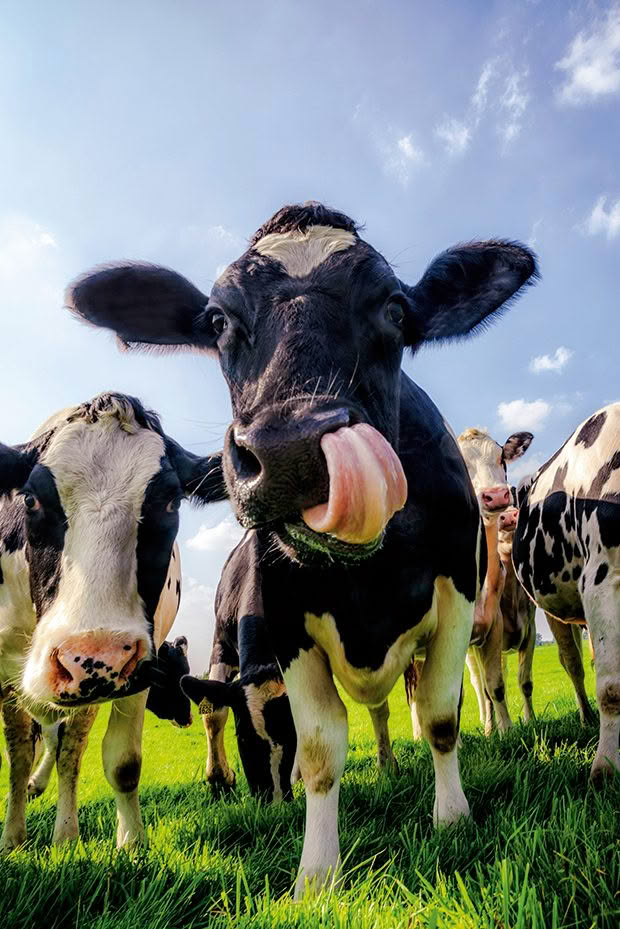
There’s more than meets the eye with these big, docile animals.
Words: Dr Sarah Clews, BVSc
Not everyone has the space on their block to keep cattle. For those that do, it doesn’t matter if their animals are pets or bound for the table, there are always unforeseen challenges. The heavy feet of cattle pug pasture quickly, their large horns – if they have them – can pose a risk to other animals in the paddock, and their immense body size means they need a lot of feed and space. However, cattle can be some of the sweetest, most curious and playful animals to work with, provided an owner gains their trust and avoids some of the most common mistakes.
THE MYSTERY OF THE COW’S TONGUE
All of our ruminant species (sheep, goats, camelids and cattle) have sharp incisor teeth on the front of the bottom jaw and a hard dental pad at the top. Sheep, goats and alpacas have a split upper lip which is very mobile and is used to nibble low to the ground and even selectively pick out the leaves and blades they prefer. Cattle, on the other hand, have a relatively thick, immobile upper lip which gets in the way. While they have an exceptionally mobile tongue to wrap around a mouthful of grass to draw it into the mouth, it’s insufficient to allow them to eat short pasture. It’s common for vets to visit a block with short pasture and skinny cows bellowing for more food. We usually encounter well-meaning yet confused owners who don’t realise that green on the ground does not always mean food is available.
To avoid this type of scenario, follow these simple guidelines:
• Growing cattle should be put into a paddock with 15- to 20cm-long grass and moved on to the next paddock when it gets down to 8cm.
• Adults can graze grass down to 4cm before being moved on to maintain pasture quality.
Remember, poor quality hay will not put weight on an animal. It will fill them up and keep them happy, but for young stock short on pasture, you’ll need something with more nutritional density.
BIG BULL, LITTLE COW
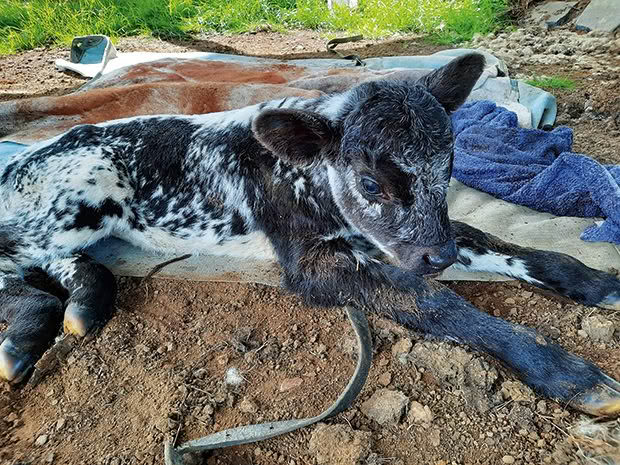
Breeding small cows to big bulls is one of the most heartbreaking mistakes vets witness. Not all cattle breeds are the same. Some breeds and bulls carry genetics for extremely large frames, while dairy cows are usually much smaller. When a small dairy cow is bred to a large bull that throws large calves, it can result in a calf that’s too big to make its way out safely during birth. Dairy farmers can manage this by growing exceptionally healthy young heifers and selecting bulls for short gestation lengths and easy calvings. But on lifestyle blocks, we see young heifers – poorly raised and ill-prepared – bred to a neighbour’s bull that jumped the fence. On blocks, we sometimes see bulls running with the girls year-round, and accidentally mating their daughters as young as six months old.
The result? Caesarean section or death of either, or both, mother and calf.
Growing heifers that are robust enough to breed safely when young – around 15 months old – is a science. They require exceptional nutrition for the first three years to allow for a healthy and safe pregnancy, birth and lactation period. This is seldom achieved on lifestyle blocks. If your young girls accidentally get pregnant, it’s wise to have your vet assist in ending the pregnancy before things get nasty.
LACK OF FACILITIES
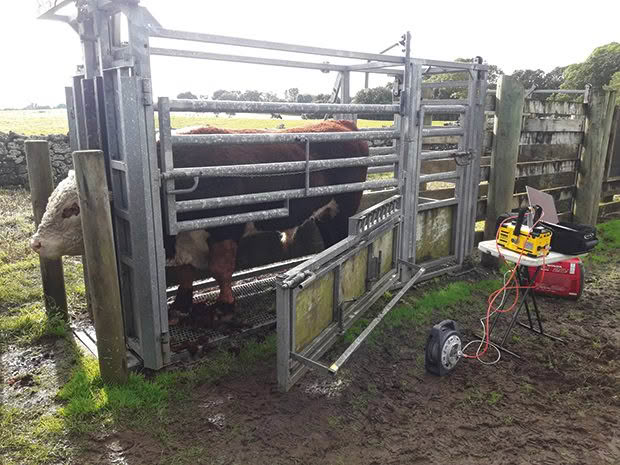
When keeping cattle on a block, it’s wise to have facilities to restrain them. There are not many procedures a vet can carry out on cattle in the paddock. Even the friendliest, hand-reared cow cannot be expected to stand still when the vet needs to shove their arm up its rear end. A solution is to use yards, if you have them. You may already be using these for drenching or vaccinations, but it might be wise to use them for veterinary treatments or calvings as well.
It’s astounding how many times I have attended a difficult calving on a block with no facilities and a distressed cow in the middle of a field. I usually hear something like “she’s really friendly, you can walk right up to her” from the owner. But have you ever seen a woman in labour? Calving a cow, unrestrained in a paddock, no matter how friendly she is, is not not realistic. In these cases, the odds of both mother and baby coming out of the situation alive start to drop considerably while your bill starts climbing through the roof.
SUDDEN DIET CHANGES
The largest stomach chamber inside a cow is called the rumen. It’s a finely tuned environment teeming with bacteria, fungi and protozoa, depending on the diet the rumen is accustomed to receiving.
A sudden diet change can disturb the rumen and its microorganisms and cause a potentially fatal gut condition called rumen acidosis.
This doesn’t affect pasture-fed cattle too much. But problems arise when we introduce high-concentrate feed too rapidly. A typical scenario is when a well-meaning owner gives a large serving of pellets or meal to a poorly or injured animal unable to graze.
If making dietary changes and introducing supplementary feed, be sure to do so slowly, increasing their allowance in increments over two weeks.
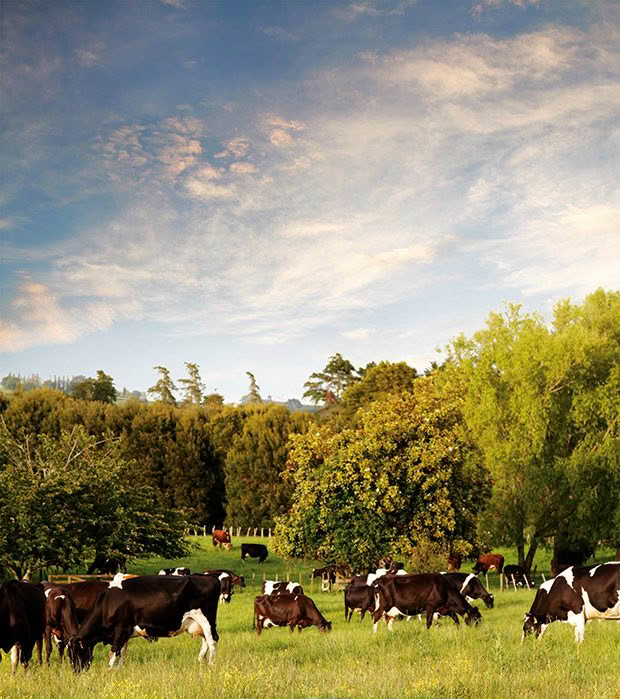
NO SHELTER
It’s a requirement under the Animal Welfare Act 1999 that all cattle have access to shelter to protect them from heat and cold stress. The requirements will change depending on the season and animal’s age, but shelter should always be provided. In fact, discussion is currently in the pipeline to possibly make the regulations stricter and enforce compliance. Think ahead now to prepare your paddocks if shelter is not already available.
The shelter animals need can vary.
Cattle will naturally use lay-of-the-land gullies, hillsides and boulders. On more manicured blocks, it’s important to provide features such as hedges and shelter belts, barns or lean-tos. If rearing calves, you’ll need a robust and deliberately positioned calf shed to protect from prevailing winds while allowing good ventilation and sunlight to stream in.
WHAT IS NAIT TAGGING?
NAIT tags refer to the “National Animal Identification and Tracing” system. Anyone owning cattle or deer in New Zealand are required to place NAIT tags in the right ear of calves, and register the animals on the NAIT system. These electronic tags trace the movement of animals around the country, enabling us to quickly squash out diseases should they crop up. The lack of awareness around NAIT requirements on lifestyle blocks meant blocks had a significant role to play in the movement of Mycoplasma Bovis (our most recent exotic disease outbreak in cattle).
If you’re breeding or rearing cattle, be sure to register with NAIT online and understand the requirements.
7 ways to prevent cold stress
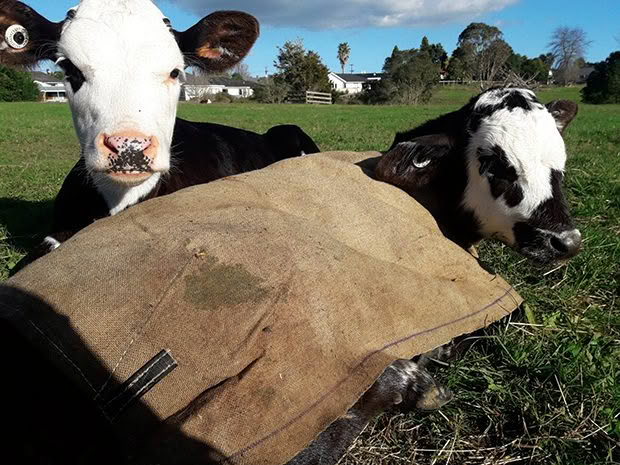
• Provide shelter to keep animals warm and protect them from wind, rain and snow. The type of shelter used should aim to minimise moisture and drafts.
• Blankets/rugs can keep animals warm, with different types of blankets available to suit different weather conditions.
• Provide dry, clean bedding to prevent heat loss through cold ground.•
• Make sure animals are in a robust condition leading into winter to allow them to better cope with extreme winter weather.
• Pay special attention to vulnerable animals such as new-born, pregnant or older animals.
• Providing extra feed on days when there’s a cold snap will give your animals more energy to produce heat to keep warm.
Source: Ministry of Primary Industries

